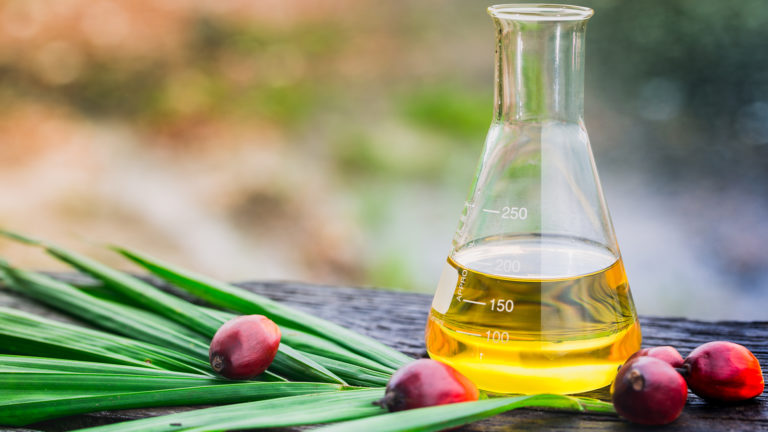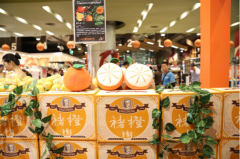The latest spot quotation of Palm Oil where will China's Palm Oil go?
At the beginning of 2020, positive fundamentals shaped the palm oil market. Global demand for palm oil was rising, and consumption was growing more than twice as fast as production.
Palm oil consumption in 2019/20 is expected to exceed production by 3.2 million tonnes, a gap that can only be filled by reducing existing stocks, resulting in palm oil stocks reaching their lowest level since 2009/10, but then the situation changed rapidly.

Palm oil for a wide range of uses
Palm oil's recent popularity is not surprising because of its wide range of uses, including cooking oil, food additives, biofuels and animal feed. These uses are similar to other edible oils such as soybean oil and rapeseed oil.
Palm oil's advantages are not only its versatility, but also its high efficiency, producing nearly five times as much oil as other oilseeds. Palm trees, for example, produce 3.3 tons of oil per hectare, compared with 0.4 tons per hectare for soybeans and 0.7 tons per hectare for rapeseed and sunflower.
Palm oil production is highly concentrated and Indonesia, as the world's largest palm oil producer, produced 42.5 million tons in 2019/20. Malaysia was next, with an annual output of 19 million tons, followed by three major oil producers-Thailand, Colombia and Nigeria-with a combined output of 5.7 million tons.
India is the world's largest importer of palm oil, with imports expected to be around 9.75 million tonnes in 2019/20. The next largest importers are the European Union and China, which imported about 7.3 million tons of palm oil in 2019/20, enough to meet all domestic demand.
palm oil prices
Palm oil prices have been rising steadily for most of 2019, but the sudden outbreak of the new crown epidemic has brought the price rise to an end. After the outbreak, demand expectations fell and prices plummeted.
Palm oil prices are influenced by many factors, such as the speed of the global economic recovery, the impact of epidemic prevention measures on palm oil production in Indonesia and Malaysia, weather in major producing areas and government measures to support producers and consumers.
Palm oil contracts on the Malaysian Derivatives Exchange (BMD) and Dalian Commodity Exchange (DCE) serve as global pricing benchmarks for the palm oil market, with futures contracts denominated in Malaysian ringgit and RMB respectively. Palm oil contracts on the Chicago Mercantile Exchange (CME) are denominated in dollars.
China and Palm Oil
Demand for palm oil in China is driven primarily by its use as an edible oil and as a major ingredient in instant noodles and cosmetics production.
Because palm oil is very important, in order to ensure the supply of palm oil, China has begun to lay out in the upper reaches of the industrial chain in recent years. Julong, for example, has developed 50,000 acres of palm plantations in Indonesia. Meanwhile, the Chinese Academy of Tropical Agricultural Sciences is experimenting with oil-producing palm trees in Hainan. However, as palm oil demand will not only be negatively affected by the hot topic of COVID-19, but also some other implied risks, it remains to be seen whether China's palm oil demand can be maintained at current levels.
Palm oil risk remains?
Efficient and large-scale pig farming will drive demand for soybean meal as a feed ingredient. Soybean oil, a by-product of soybean meal production, is also in excess supply. Because palm oil can be easily replaced by soybean oil, excess soybean oil supply can reduce palm oil demand. China's imports of soybeans from the United States have also increased as a result of the first phase of the Sino-US economic and trade agreement, which eliminated some import tariffs on U.S. soybeans.
Another risk is changing consumer behavior. If consumers prefer other oils that are more readily available or appear more sustainable, this could be detrimental to palm oil production, and producers need to manage this risk in response to market developments.
Is there still a chance?
On the other hand, not all factors are negative for palm oil, and there are many factors driving demand for palm oil in China. The most important of these is the Sino-US trade agreement. China promised to buy $40 billion worth of U.S. agricultural products in the agreement, which may benefit palm oil.
African swine fever has caused a sharp decline in China's pig population, so China seems ready to import more American pork. Soybean oil production will decrease with the decrease in feed demand for soybean meal, thus benefiting palm oil demand. If U.S. pork production and shipments are not severely affected by COVID-19, this could lead to record demand for palm oil.
Another more obvious positive factor is price. Palm oil is usually much cheaper than soybean oil. If the price difference between palm oil and other edible oils widens, Chinese demand will not only remain at current levels, but will continue to increase.
Outlook
China's plans to achieve food safety at home through overseas acquisitions can be seen through Chinese investments in palm plantations and meat companies overseas, such as the acquisition of Smithfield Foods by Shuanghui International Holdings Limited (now known as WH Group).
On the other hand, Han Changfu, Minister of Agriculture and Rural Affairs of China, recently stated that increasing pork production is the main goal, indicating that the government does not want to rely on imports to increase pig production capacity. Either way, China's agricultural and food security policies could have a significant impact on future palm oil demand. Demand rises or falls depending on the path China chooses.
- Prev

Chu orange listing plan postponed for one year, fruit planting enterprises can smoothly six capital markets?
Recently, according to the paper, Chu Yibin, general manager of Chu's agriculture where Chu Orange is located, revealed the idea and plan of the company's listing at a press conference. According to Chu Yibin, there have been four counseling agencies stationed, but due to the impact of the epidemic, the listing plan will be delayed for one year
- Next

China has suspended the import of Australian barley, wine and other agricultural products
Foreign news sources were quoted as saying that China has issued a notice to suspend the import of at least seven types of goods originating in Australia, including barley and wine. According to the source, China requires barley, wine, sugar, wood, coal, lobster, copper mines and other merchants
Related
- A one-day flower show brings 130 million yuan in orders! Nanhai, this Phalaenopsis exhibition is amazing
- What do the flower language and meaning of Lutheran tree mean? Precautions for planting Lutheran tree
- Encounter Chaoshan Kongfu tea, not without this cup of Phoenix single clump
- The durian market in Vietnam and Thailand is flooded. The price of imported durian has plummeted by 30-40% in a month.
- Shanghai solved the problem of local vegetable supply by planting 80,000 mu of green leafy vegetables.
- Wageningen University has become the best agricultural university in the world for the seventh time in a row.
- The strongest export season of South African grapes is full of challenges, with exports to Russia falling sharply by 21%.
- Sri Lanka is on the verge of bankruptcy, "Tea for debt" Organic Agriculture Revolution aggravates the Food crisis?
- Turning waste into earthworm manure and worm manure into organic fertilizer-A new choice for auxiliary farming
- Organic rice growers shoulder the responsibility of nurturing agricultural talents! Yinchuan Sustainable Farm with Organic Life Camp

